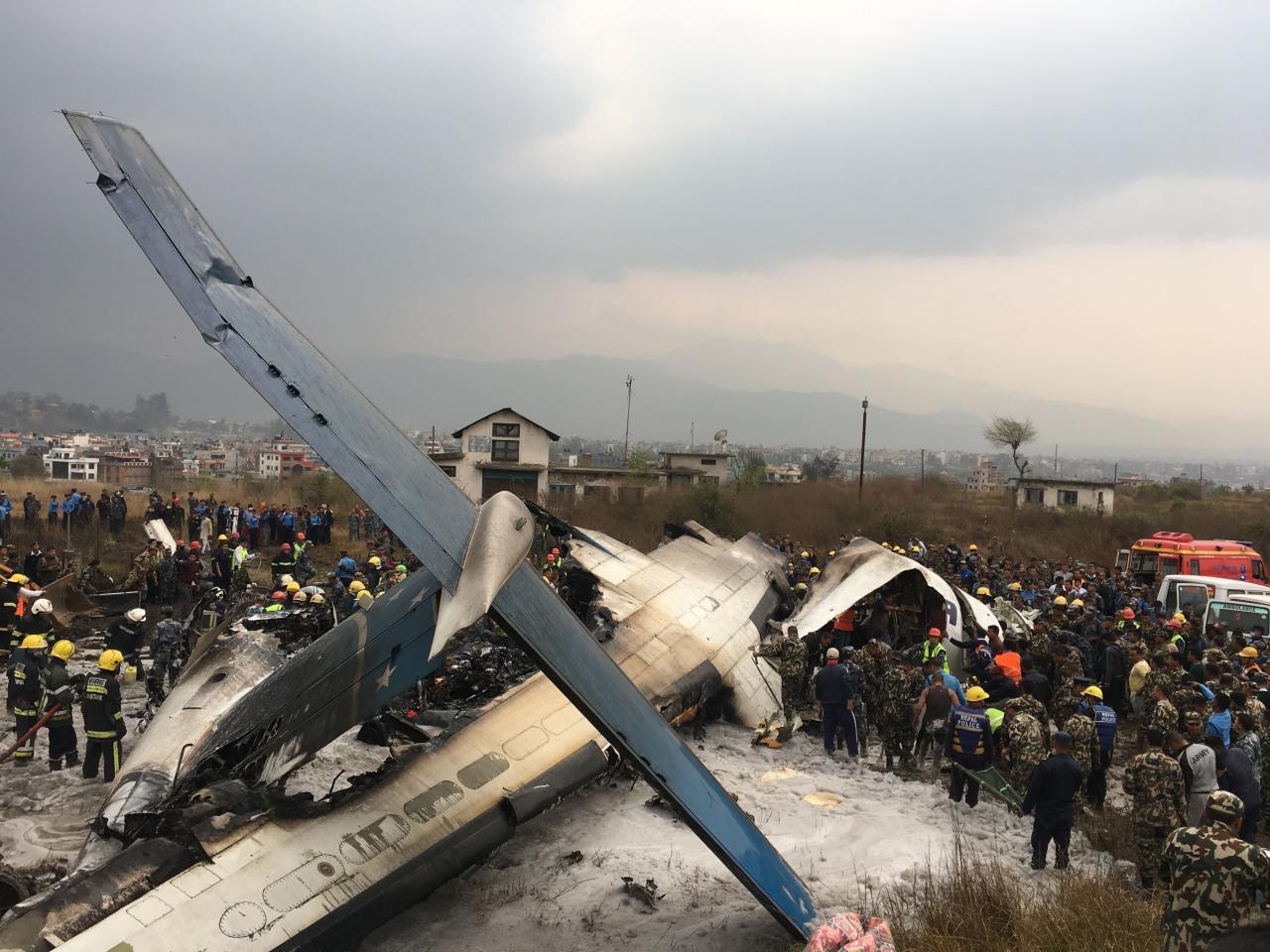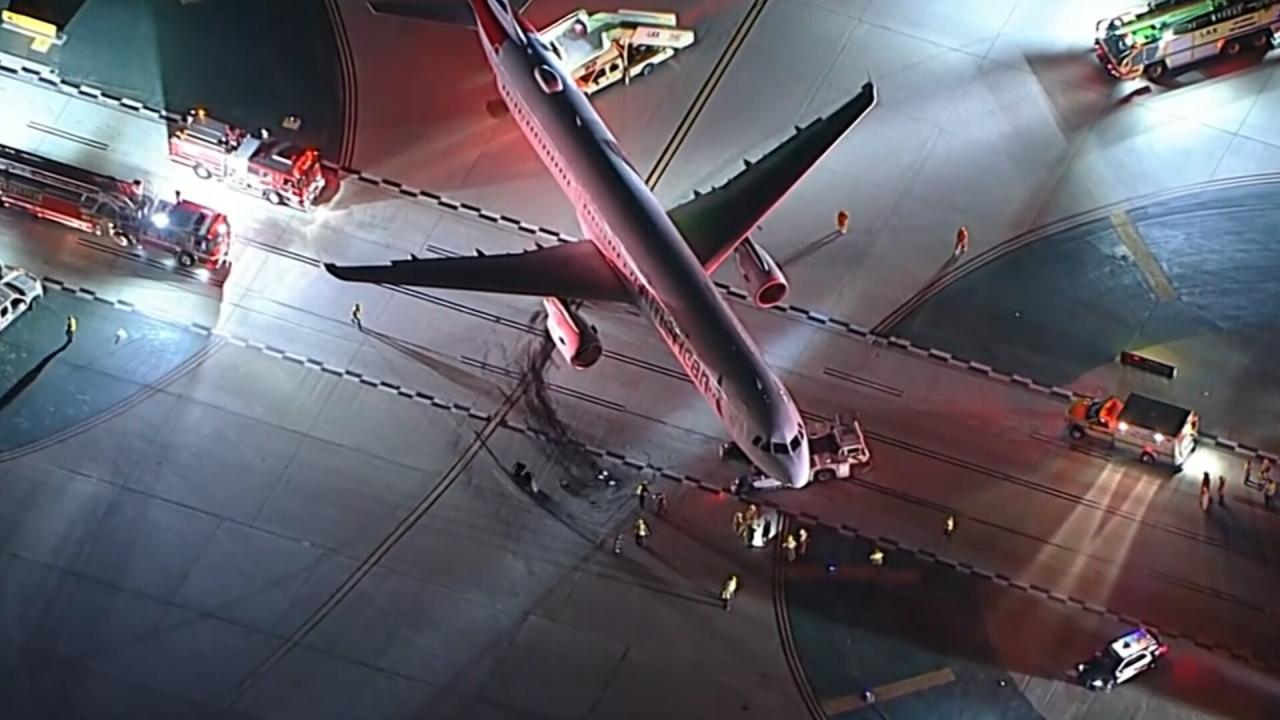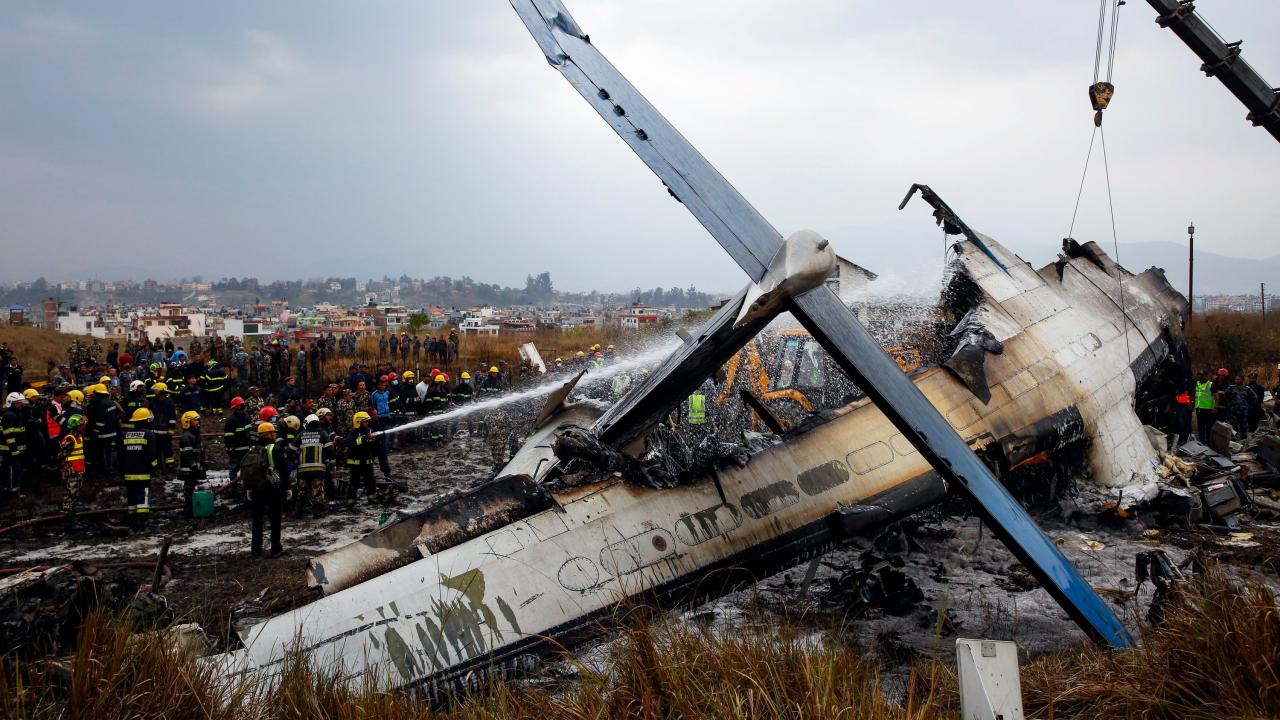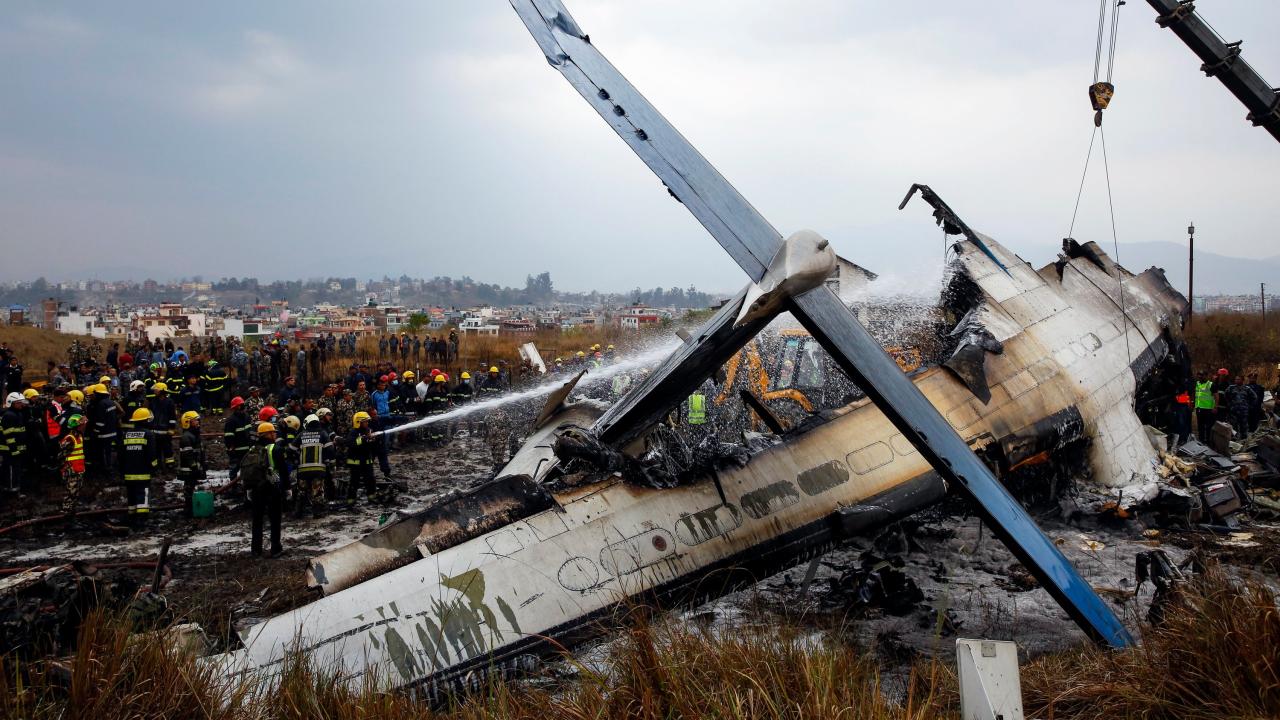Plane crashes December 2033: This thought experiment explores the potential causes, consequences, and preventative measures surrounding a hypothetical series of air disasters in December 2033. We’ll delve into various scenarios, from mechanical failures and human error to adverse weather and even acts of terrorism, examining the potential impact on the aviation industry and society at large. We’ll also look at how advancements in technology and safety protocols could mitigate future risks.
This analysis aims to be a blend of realistic speculation and informed discussion, highlighting the complex interplay of factors that contribute to air safety. By examining potential future challenges, we can better understand the ongoing need for vigilance and innovation within the aviation sector. We’ll consider the human element, technological solutions, and the broader societal consequences of such a devastating event.
Potential Causes of Hypothetical Plane Crashes in December 2033

Analyzing potential causes of plane crashes in December 2033 requires considering a range of factors, from mechanical failures and human error to adverse weather and potential acts of terrorism. Understanding these possibilities is crucial for improving aviation safety protocols and technological advancements.
Mechanical Failures
Potential mechanical failures contributing to a December 2033 plane crash could include engine malfunctions due to fatigue or undetected flaws in manufacturing or maintenance. Hydraulic system failures, impacting flight control surfaces, are another critical concern. Furthermore, failures in crucial flight control systems, such as the autopilot or flight management system, could lead to catastrophic events. The aging aircraft fleet and the increasing demand for air travel could exacerbate the risk of these mechanical failures.
Human Error
Human error remains a significant factor in aviation accidents. Pilot fatigue, inadequate training, or lapses in judgment during critical phases of flight could lead to accidents. Poor communication between pilots and air traffic control, or within the cockpit crew itself, can also contribute to incidents. Additionally, mistakes made by ground crew during maintenance or pre-flight checks can create hazardous conditions.
Adverse Weather Conditions
December is often a period of challenging weather conditions in many parts of the world. Severe turbulence, icing, snowstorms, and low visibility can all significantly impact flight safety. Unexpected changes in weather patterns, especially in remote areas, could catch pilots and air traffic control off guard, leading to accidents. Effective weather forecasting and pilot training for handling adverse conditions are crucial to mitigate this risk.
Terrorist Attack Scenario

A terrorist attack targeting a plane in December 2033 could involve various methods, such as hijacking, bomb threats, or the use of sophisticated weapons. The consequences could be devastating, resulting in significant loss of life and widespread panic. The impact on air travel security and public confidence would be substantial, potentially leading to increased security measures and disruptions in air travel.
Thinking about plane crashes in December 2033? It’s a sobering thought, considering the complexities of air travel. To understand potential contributing factors, it’s helpful to examine recent incidents; for example, check out the news coverage on a halifax plane crash today to see what investigations might reveal. Studying these cases helps us prepare for future safety improvements and hopefully prevents similar tragedies in December 2033 and beyond.
Likelihood and Impact Comparison
| Cause | Likelihood (1-5, 5 being most likely) | Impact (1-5, 5 being most severe) | Mitigation Strategies |
|---|---|---|---|
| Mechanical Failure | 4 | 5 | Improved maintenance protocols, advanced materials |
| Human Error | 4 | 4 | Enhanced pilot training, improved cockpit resource management |
| Adverse Weather | 3 | 4 | Advanced weather forecasting, improved de-icing techniques |
| Terrorist Attack | 2 | 5 | Enhanced security measures, improved intelligence gathering |
Safety Protocols and Technological Advancements
Existing and future safety protocols and technological advancements play a crucial role in preventing and mitigating plane crashes. Improved pilot training, advanced aircraft design, and enhanced air traffic control systems are all vital elements in enhancing aviation safety.
Existing Safety Protocols
Several existing safety protocols, such as stringent maintenance schedules, rigorous pilot training programs, and sophisticated air traffic management systems, already contribute significantly to air travel safety. These protocols, however, need continuous improvement and adaptation to address emerging challenges and technological advancements.
Technological Advancements by 2033
By 2033, we can anticipate several technological advancements in aviation safety. These may include:
- Advanced collision avoidance systems with improved sensor technology and predictive algorithms.
- Enhanced weather radar systems capable of providing more accurate and timely weather information.
- Improved aircraft structural materials that are lighter, stronger, and more resistant to fatigue.
- Autonomous flight systems that can assist pilots in handling challenging situations.
- Real-time data analytics to identify potential maintenance issues before they lead to failures.
Improved Pilot Training
Improved pilot training programs focusing on advanced flight simulation, crisis management, and human factors will be essential in reducing human error. Simulations that accurately recreate challenging weather conditions and emergency situations will enhance pilot preparedness.
Okay, so you’re looking into plane crashes in December 2033? That’s a pretty specific search! To take a break from that potentially grim topic, check out this amazing display of technology: the shanghai new year drone show. It’s a stunning visual spectacle that showcases incredible engineering. Hopefully, thinking about that bright future will balance out the research on plane crashes in December 2033.
Role of Air Traffic Control
Air traffic control plays a crucial role in preventing mid-air collisions and managing air traffic efficiently. Advanced communication systems and improved coordination between air traffic controllers and pilots are vital for ensuring safety. The integration of automated systems to assist air traffic controllers will enhance efficiency and reduce workload.
Thinking about plane crashes in December 2033? It’s a sobering thought, prompting us to consider aviation safety improvements. For a recent example of the devastating impact of such events, check out this report on a plane crash in Halifax , which highlights the importance of ongoing safety measures. Understanding past incidents helps us prepare for and potentially prevent future plane crashes in December 2033 and beyond.
Impact and Aftermath of a Hypothetical Crash
The immediate aftermath of a major plane crash would involve a complex and challenging rescue and recovery operation. The long-term consequences for the airline, families of victims, and the broader aviation industry would be profound and far-reaching.
Immediate Aftermath
The immediate aftermath of a major plane crash would involve a large-scale emergency response, including fire and rescue services, medical personnel, and law enforcement. The scene would be chaotic, with wreckage scattered across a wide area, and a desperate search for survivors. The recovery of bodies and the identification of victims would be a painstaking process.
Long-Term Consequences

The long-term consequences for the airline involved would include significant financial losses, reputational damage, and potential legal battles. For the families of the victims, the impact would be devastating, with profound grief, emotional trauma, and long-term psychological effects. The economic impact would extend beyond the airline, affecting tourism, insurance industries, and local communities.
Economic Impact
A large-scale air disaster would have a significant economic impact, affecting various sectors, including the aviation industry, tourism, and insurance. The cost of investigations, compensation to families, and potential legal actions would be substantial. The loss of human capital and the disruption to air travel would also have considerable economic consequences.
Changes in Aviation Regulations
Following a hypothetical crash, aviation regulations might undergo significant changes to address identified safety deficiencies. This could involve stricter maintenance protocols, enhanced pilot training requirements, and the implementation of new safety technologies. The regulatory changes would aim to prevent similar accidents in the future.
Emotional Toll, Plane crashes december 2033
The emotional toll on survivors and families would be immense. Survivors might experience post-traumatic stress disorder (PTSD), anxiety, and depression. Families would grapple with grief, loss, and the need to rebuild their lives. Support services for survivors and families would be crucial in the aftermath of such a tragedy.
Illustrative Scenarios and Case Studies
Creating a detailed scenario helps to illustrate the complexities involved in a plane crash and the subsequent response. Comparing this hypothetical scenario with past events provides valuable insights into how such incidents are managed and the lessons learned.
Detailed Crash Scenario
Imagine a Boeing 787 Dreamliner, flight XY123, departing from London Heathrow on December 15th, 2033, bound for Sydney, Australia. Approximately three hours into the flight, over the Indian Ocean, a catastrophic engine failure occurs, resulting in a loss of control. The aircraft crashes into the ocean, with 300 passengers and crew onboard. The location is remote, hampering immediate rescue efforts.
Hypothetical Rescue Operation
The rescue operation involves a coordinated effort between multiple agencies, including maritime search and rescue teams, naval vessels, and aircraft. Specialized underwater vehicles are deployed to locate the wreckage and recover survivors and bodies. Advanced sonar technology and remotely operated vehicles (ROVs) play a crucial role in the underwater search. The remoteness of the crash site and challenging weather conditions significantly complicate the rescue efforts.
Challenges in Victim Identification
Identifying victims and their remains presents significant challenges due to the damage to the aircraft and the bodies. DNA analysis, dental records, and personal belongings are used to identify the victims. The process is slow, painstaking, and emotionally taxing for the families awaiting news of their loved ones.
Comparison with Previous Disasters
This hypothetical scenario can be compared with past major air disasters, such as the Air France Flight 447 crash in 2009, to identify similarities and differences in the causes, rescue operations, and long-term consequences. Analyzing previous incidents helps to understand the lessons learned and how to improve safety protocols and emergency response strategies.
Crash Site Description
The crash site, immediately after the event, would present a scene of devastation. Large pieces of the aircraft’s wreckage would be scattered across the ocean surface. Debris, including personal belongings of passengers, would be floating amidst the wreckage. The surrounding water would likely be heavily polluted with fuel and other materials from the aircraft. The overall scene would be a somber and haunting reminder of the tragedy.
Concluding Remarks
Ultimately, the hypothetical plane crashes of December 2033 serve as a stark reminder of the fragility of air travel and the constant need for improvement in safety protocols and technological advancements. While we hope such a scenario never materializes, exploring these possibilities allows us to proactively address potential vulnerabilities and enhance the safety and resilience of the aviation industry. The lessons learned from examining these hypothetical scenarios can inform real-world improvements and help prevent future tragedies.
Detailed FAQs: Plane Crashes December 2033
What types of mechanical failures could cause a plane crash in 2033?
Potential mechanical failures could include engine malfunctions, structural weaknesses, or failures in crucial flight control systems. Advances in technology might reduce the likelihood, but complete elimination is unlikely.
How would insurance companies handle mass casualties from a major air disaster?
Insurance payouts would likely be massive, potentially leading to significant financial strain on insurers and potentially impacting future insurance premiums for airlines.
What role would social media play in the aftermath of a large-scale air disaster?
Social media would likely be a key source of information (and misinformation) spreading rapidly, impacting public perception and potentially hindering official investigations.
How might public trust in air travel be affected by a major crash?
Public confidence in air travel could be severely shaken, potentially leading to decreased air travel demand for an extended period.
